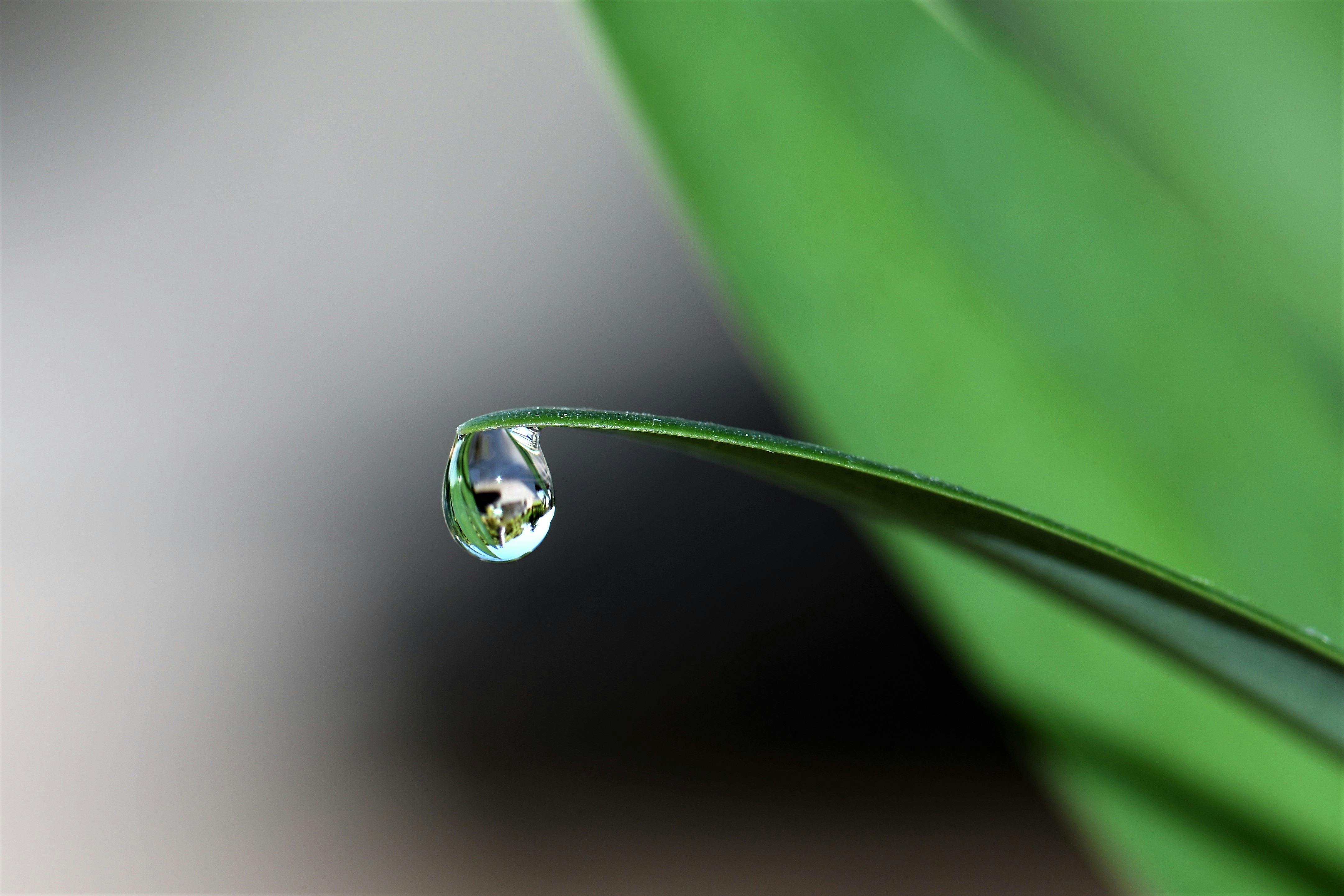Strawberry plants are a great addition to any garden and can provide you with a delicious crop of juicy fruits. Knowing how often to water your strawberry plant is essential for its health and for producing a good harvest. In this article, we will discuss how often you should water your strawberry plant so that it can thrive.It is recommended to water a strawberry plant about once a week, or when the top inch of soil feels dry. During hotter months, you may need to water more frequently—up to twice a week. Make sure to give the plant enough water for the moisture to reach the roots.
Assessing Your Strawberry Plant’s Water Needs
Watering your strawberry plant is an important part of ensuring it remains healthy and productive. The frequency and amount of water your plant needs depends on a number of factors, including the type of soil it’s planted in, the climate and weather conditions, the amount of sun exposure it receives, and other environmental factors.
It’s important to monitor your strawberry plant regularly to assess its water needs. When assessing water needs, you’ll want to take into account the soil type, the amount of rain or irrigation received in the previous days or weeks, and any other factors that could affect the water demand. If the soil is dry and there has not been any rain or irrigation for a few days or even weeks, you may need to add additional water to ensure that your plant remains healthy.
The best way to assess your strawberry plant’s water needs is by checking the soil moisture level. You can do this by using either a hand-held moisture meter or simply by taking a handful of soil and squeezing it in your hand; if it forms a ball that easily breaks apart when pressed with your fingers, then it is likely moist enough for your strawberry plant. However, if it does not form a ball at all or if it forms one but does not break apart easily when pressed with your fingers, then you may need to add more water.
You should also consider other environmental factors when assessing how much water your strawberry plant needs. For example, high temperatures can cause increased evaporation from the soil surface which can reduce overall moisture levels; in this case, you may need to increase watering frequency to compensate for these conditions. Additionally, windy conditions can also cause rapid drying out of soils so additional watering may be necessary during windy periods as well.
Overall, regular monitoring of your strawberry plants will help you ensure that they are receiving adequate amounts of water for healthy growth and production; however, too much watering can have adverse effects on their health as well so be sure to keep an eye on their moisture levels and adjust accordingly.
Understanding Strawberry Plant Soil Requirements
Strawberry plants require well-drained soil with a pH of 5.5 to 6.5. The ideal soil type is a sandy loam, which allows for proper drainage and aeration of the roots. It is important to keep in mind that strawberries will not tolerate water-saturated soils, so it is essential to ensure proper drainage when planting.
It is also important to add organic matter such as compost or aged manure to the soil prior to planting. These materials will help improve the soil texture, increase water-holding capacity, and provide essential nutrients for the plants. Adding a layer of mulch around the plants will also help retain moisture and reduce weeds.
When planting strawberry plants, it is important to space them appropriately so that they receive adequate air circulation and light. If the plants are too close together, they can become overcrowded and prone to disease and pest infestations. Additionally, spacing them properly will reduce competition for resources such as water and nutrients in the soil.
When caring for strawberry plants, it is important to water them regularly but not over-water them as this can lead to root rot or disease issues. When watering strawberry plants, it is best to water at the base of the plant rather than overhead as this helps reduce disease problems caused by wet foliage. Additionally, fertilizing your strawberry plants regularly with a balanced fertilizer such as 10-10-10 can help ensure that they receive all of the nutrients they need for optimal growth and production.
Overall, understanding your soil requirements for growing strawberries is essential for ensuring healthy and productive berry crops each year! With proper care and attention given to their needs, you can enjoy delicious sweet strawberries straight from your garden!
How To Tell If Your Strawberry Plant Is Getting Enough Water
Knowing if your strawberry plant is getting enough water is important to ensure that your plants remain healthy and productive. Plants that are underwatered can suffer from wilting, yellowing leaves, and poor yields. Fortunately, there are several ways to determine if your strawberry plant is receiving the right amount of water.
The first way to tell if your strawberry plant is getting enough water is by checking the soil moisture. Use a soil moisture meter or stick your finger into the soil to measure the moisture content. If it feels dry, then you need to give the plants more water. If it feels moist, then you can wait a day or two before watering again.
Another way to tell if your strawberry plant is getting enough water is by examining the leaves. Healthy strawberries will have glossy green leaves with no signs of wilting or yellowing. If you notice any discoloration or wilting of the leaves, this could be an indicator that your plant needs more water.
Finally, you can also check for signs of drought stress on the fruit itself. Look for fruits that are small in size or have cracked skin as these could be signs of inadequate watering. It’s also important to note that underwatered plants may produce fewer fruits than those that are properly watered.
By following these simple tips, you can easily tell if your strawberry plant is getting enough water and take steps to ensure its health and productivity. With proper watering and care, you can enjoy delicious strawberries all season long!
Wilting Leaves
One of the most obvious signs that a strawberry plant is not getting enough water is wilting leaves. Wilted leaves will appear limp and droopy, as if they have been deprived of moisture. The leaves may also appear yellow or brown in color, which indicates that it is not getting enough water to stay healthy and vibrant. If the plant is not receiving sufficient water, it will start to wilt and may eventually die off if not addressed quickly.
Leaf Curling
Another sign that a strawberry plant may not be getting enough water is leaf curling. When a strawberry plant is not receiving sufficient hydration, its leaves may start to curl inward towards the stem of the plant. This can be a sign that the soil around the plant has become too dry or that the plant isn’t getting enough water from irrigation or rainfall. If this occurs, it’s important to increase watering frequency or add mulch around the base of the plant to help retain moisture in the soil.
Fewer Flowers and Fruit
When a strawberry plant isn’t receiving enough water, it won’t be able to produce as many flowers and fruit as normal. The flowers and fruit require hydration in order to develop properly and without sufficient water, they won’t reach their full potential. If you notice fewer flowers or smaller fruits than normal on your strawberry plant, it could be an indication that it isn’t getting enough water.
Stunted Growth
Stunted growth is another sign that a strawberry plant may not be getting enough water. Without adequate hydration, plants won’t reach their full growth potential because they won’t have access to all of the nutrients they need for growth. If you notice your strawberry plants are growing slower than usual or aren’t reaching their full size, it could be an indication that they aren’t getting enough water.

Climate
The climate is one of the major factors that can affect how often you should water a strawberry plant. In warm climates, such as in the Southwestern United States, it may be necessary to water the plants more often during the summer months. In cooler climates, such as in Northern Europe, you may need to water them less frequently during the winter months. Generally, strawberry plants require more frequent watering during warmer months and less frequent watering during colder months.
Soil Type
Another factor that can affect how often you should water a strawberry plant is the type of soil it is grown in. Sandy soils tend to dry out quickly and require more frequent watering than other types of soil. Clay soils tend to hold onto moisture better and may not need to be watered as frequently. Additionally, soil with high organic matter content will also need to be watered less frequently than other types of soil.
Plant Health
The health of the plant can also be an indicator of how often it should be watered. If a strawberry plant is showing signs of stress or wilting, then it may need to be watered more frequently than usual. On the other hand, if a strawberry plant is thriving and growing well, then it may not need to be watered as often as normal. It’s important to pay attention to your plants and adjust your watering schedule accordingly.
Weather Conditions
Weather conditions can also have an impact on how often you should water a strawberry plant. If there has been a lot of rainfall recently, then you may not need to water your plants quite as often as normal. On the other hand, if there has been a lack of rainfall or if temperatures are very hot and dry, then your plants may need extra water in order to stay healthy and produce fruit.
Signs Of Overwatering A Strawberry Plant
Strawberry plants need careful watering to ensure healthy growth. Too much water can cause serious damage to the plant, leading to wilting, leaf discoloration and root rot. Here are some signs that you might be overwatering your strawberry plant:
Wilting Leaves
When a strawberry plant is overwatered, the leaves will start to wilt and become soft. Wilting of the leaves will be more pronounced if the soil is too wet and does not have enough oxygen for the roots to survive. The leaves may also become discolored or turn yellow, as the excess water prevents them from getting enough nutrients.
Roots Rotting
Excess moisture in the soil can cause the roots of a strawberry plant to rot. This is due to insufficient oxygen in the soil and lack of proper drainage. The roots may become brown or black and mushy, which means they are dead or dying due to rot.
Fungal Growth on Leaves
When a strawberry plant is overwatered, it can be prone to fungal growth on its leaves. White spots or yellow patches may appear on the leaves, which are caused by fungi that thrive in moist conditions. These spots can spread quickly if left unchecked, leading to stunted growth or death of the plant.
Watering Tips for Properly Caring for a Strawberry Plant
Strawberry plants are one of the most popular and rewarding fruits to grow in the home garden. With a little attention, strawberry plants can produce an abundance of juicy, sweet and delicious berries. But to maintain healthy and productive strawberry plants, it’s important that they receive proper watering. Here are some tips for properly watering a strawberry plant.
First, it’s important to determine how often your strawberry plant needs water. This depends on the weather conditions in your area as well as any other factors that may affect soil moisture levels such as wind or heat. In general, strawberry plants need about an inch of water per week during the growing season (April through August). During dry periods or periods of extreme heat, you may need to water more frequently than this.
When you water your strawberry plant, use a slow trickle from a hose or watering can rather than a hard spray from a sprinkler. This will help the soil absorb more of the moisture and prevent it from running off before it’s able to soak into the ground. Additionally, try to water in the morning when temperatures are cooler; this will help reduce evaporation so more water reaches the roots of your plant.
You should also be sure to avoid over-watering your strawberry plant; too much water can be just as damaging as too little. To determine if your strawberry plant needs watering, stick your finger into the soil near the base of the plant; if it feels dry up to two inches down then it’s time to give it some extra moisture. If you’re not sure how much water is enough, check with your local agricultural extension office for advice specific to your area.
Following these tips can help ensure that your strawberry plants stay healthy and productive all season long!

Conclusion
Watering a strawberry plant correctly is essential for achieving maximum growth and yield. Depending on the climate, soil type, and other factors, the amount of water needed for optimal growth may vary. However, a general guideline is to water the plant when the top inch of soil is dry. In very hot climates, the soil may need to be watered more frequently. Additionally, it may be beneficial to mulch around the strawberry plants in order to retain water and provide additional protection from diseases and pests. By following these guidelines, you can ensure that your strawberry plants receive the proper amount of water for maximum growth and production.
Overall, there is no one-size-fits-all answer to how often you should water a strawberry plant. However, by monitoring soil moisture levels and taking into account external factors such as climate and mulch application, you can provide your strawberry plants with enough water to allow them to thrive. With proper care and attention, you can enjoy a plentiful harvest of tasty strawberries each season!



